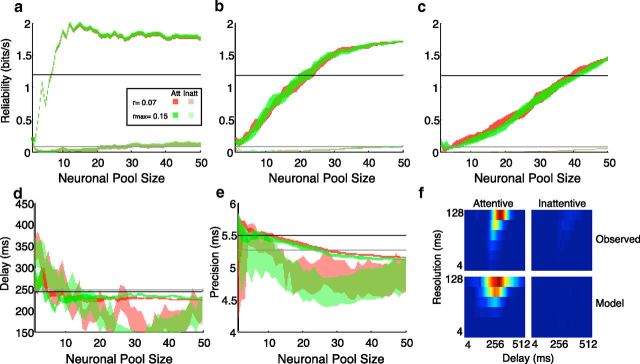Figure 8.
A simple population model, in which the responses from pools of sampled neurons were summed, predicted that small numbers of neurons were responsible for task performance and timing. Pools were constructed by progressively adding neurons from our sample. a–c, The order in which neurons were selected was varied three ways: (1) sorted according to their choice information (a), (2) randomly but weighted according to their choice information (b), and (3) completely random (c). For all three cases, the contingency tables from likely and unlikely epochs of different recording sessions were combined, with varying levels of pairwise correlation (red represents r = 0.07; green, rmax = 0.15), to create pooled sensory and choice information surfaces. f, Covariance analysis was applied to these pooled sensory and choice responses to create a behavioral information surface. Shaded regions indicate the SD of the random pools for information surface peak parameters of reliability (a–c), latency (d), and precision (e). Latency and precision are shown for the weighted random selection model only (b). Horizontal lines (black indicates likely; gray, unlikely) indicate behavioral observations. For all neuronal selection methods, peak information eventually exceeds actual observation of attentive reliability, although the exact number of neurons at which this happens varies (a–c). An example random pool of 17 neurons (rmax = 0.15) shows that the small neuronal numbers were capable of explaining both peak parameters (b, d, e) and the single peak nature of observed behavioral information surfaces (e) across attentive states.

